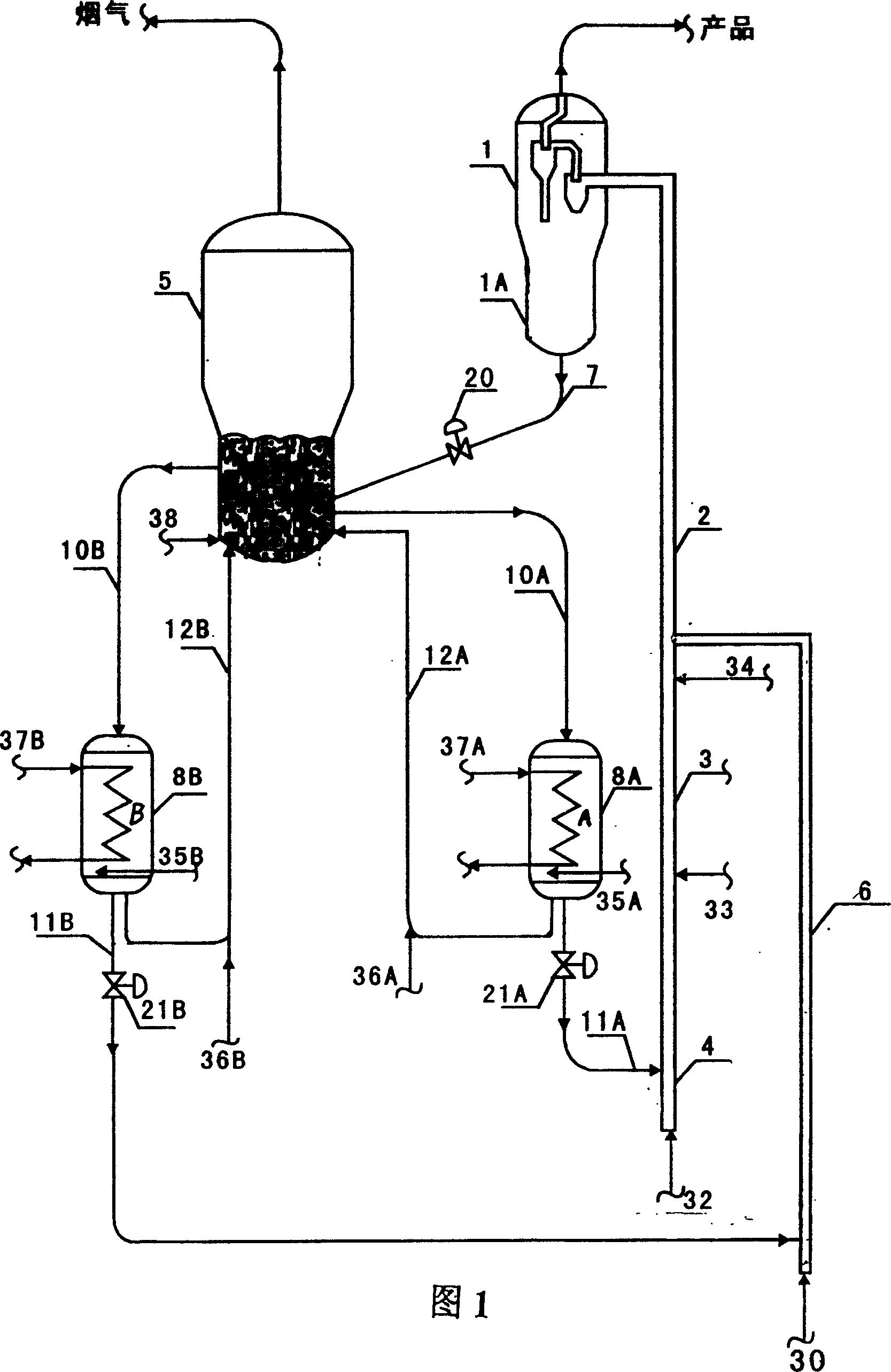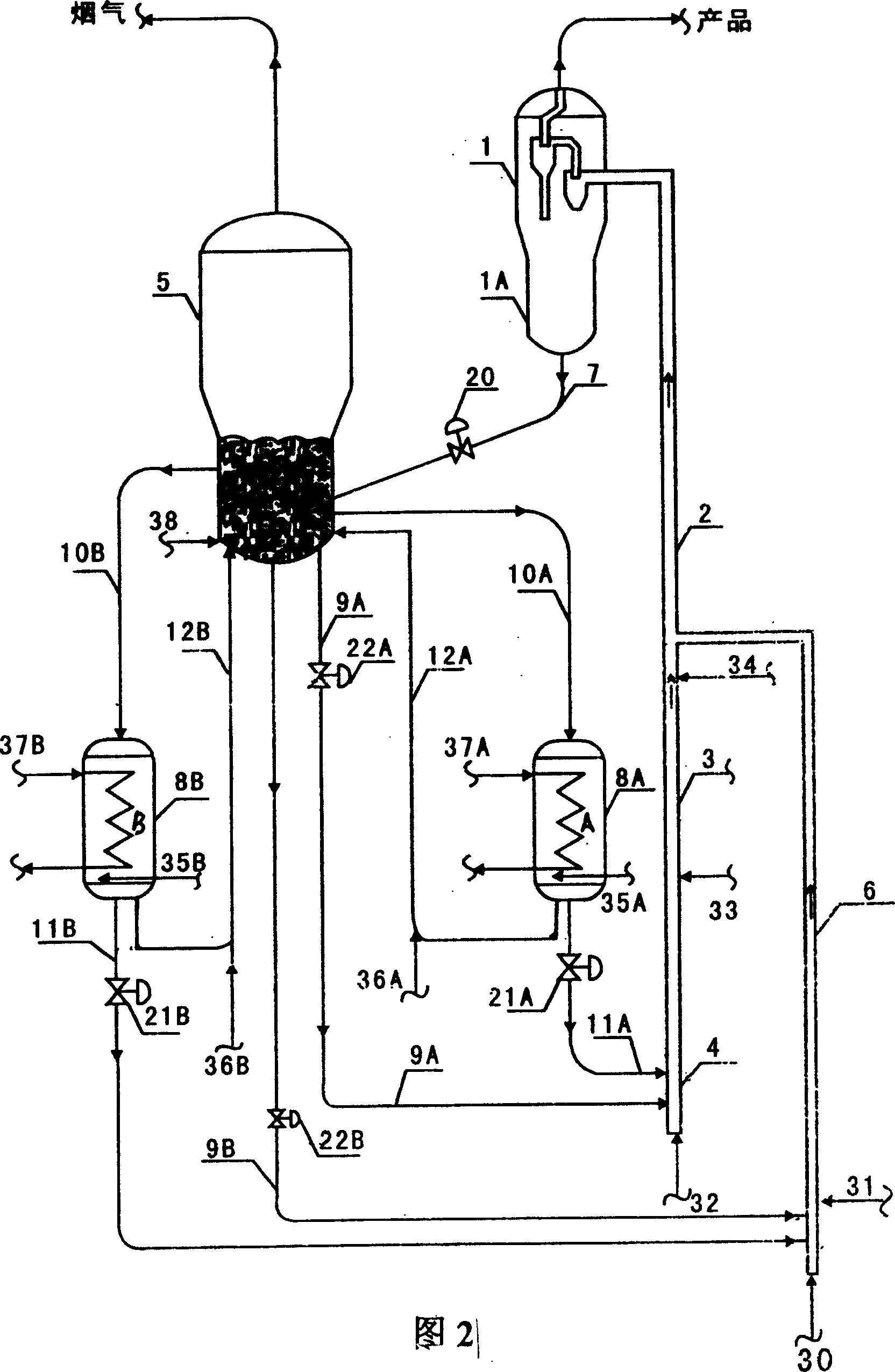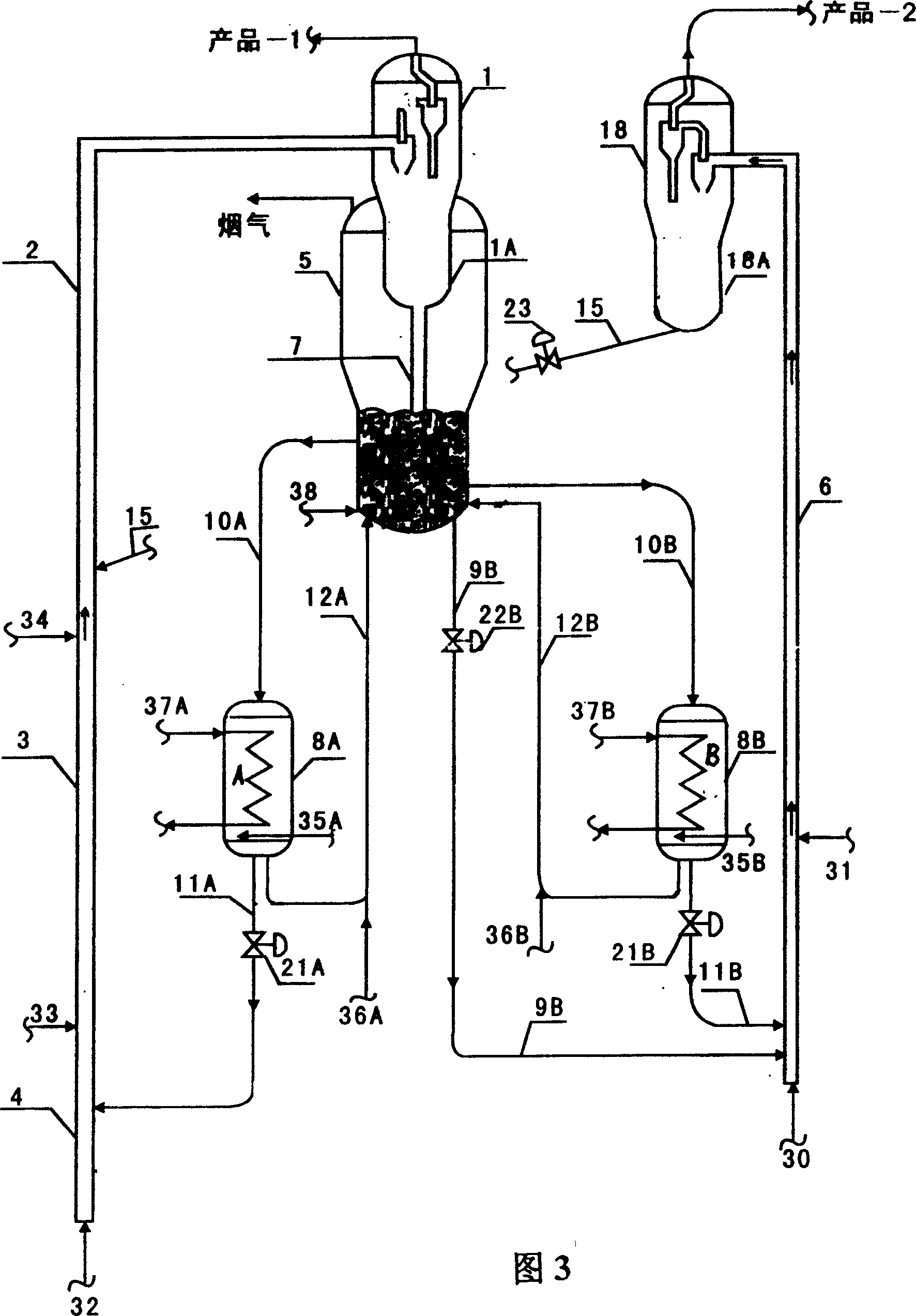Method for catalytic conversion of heavy oil and device thereof
A catalytic conversion method and heavy oil technology, applied in catalytic cracking, cracking, petroleum industry, etc., can solve problems such as unfavorable catalytic cracking reaction, reduced catalyst activity, adverse effects of reaction system optimization, etc.
- Summary
- Abstract
- Description
- Claims
- Application Information
AI Technical Summary
Problems solved by technology
Method used
Image
Examples
example 1
[0140] In order to verify the effect of the present invention, the process flow shown in Figure 1, the process conditions shown in Table 2, the raw materials shown in Table 1, and the GOR-C catalyst produced by the Changling Refinery Catalyst Plant are used. The test results are listed于表3。 In Table 3.
[0141] Logistics
[0142] In Table 2, Scheme A of the prior art adopts conventional heavy oil catalytic cracking technology: the temperature of the regenerator catalyst bed is 700°C, and the reaction temperature is 560°C. The raw material temperature is 240°C, and the agent / oil ratio is 8.0. Therefore, the temperature difference between the regenerant and the raw material is 460°C. Solution A of the prior art has the following shortcomings:
[0143] (1) The temperature of the raw material at 240°C is quite low for the cracking of the residual oil-containing raw material.
[0144] (2) Although the temperature of the regenerator meets the regeneration requirements, the temp...
Embodiment 2
[0149] In order to verify the effect of the present invention, the process flow shown in Fig. 4 is adopted, the process conditions shown in Table 4 and the heavy oil feedstock shown in Table 1 are adopted. The inferior gasoline is catalytically cracked gasoline, and the catalyst is GOR-C. The test results are shown in Table 5.
[0150] In Table 4, the prior art scheme A uses conventional heavy oil catalytic cracking technology: the temperature of the regenerator catalyst bed is 700°C, and the reaction temperature is 560°C. The raw material temperature is 240°C, and the agent / oil ratio is 8.0. Therefore, the temperature difference between the regenerant and the raw material is 460°C. Solution A of the prior art has the following shortcomings:
[0151] (1) The temperature of the raw material at 240°C is quite low for the cracking of the residual oil-containing raw material.
[0152] (2) Although the temperature of the regenerator meets the regeneration requirements, the temperature ...
PUM
 Login to View More
Login to View More Abstract
Description
Claims
Application Information
 Login to View More
Login to View More - R&D
- Intellectual Property
- Life Sciences
- Materials
- Tech Scout
- Unparalleled Data Quality
- Higher Quality Content
- 60% Fewer Hallucinations
Browse by: Latest US Patents, China's latest patents, Technical Efficacy Thesaurus, Application Domain, Technology Topic, Popular Technical Reports.
© 2025 PatSnap. All rights reserved.Legal|Privacy policy|Modern Slavery Act Transparency Statement|Sitemap|About US| Contact US: help@patsnap.com



